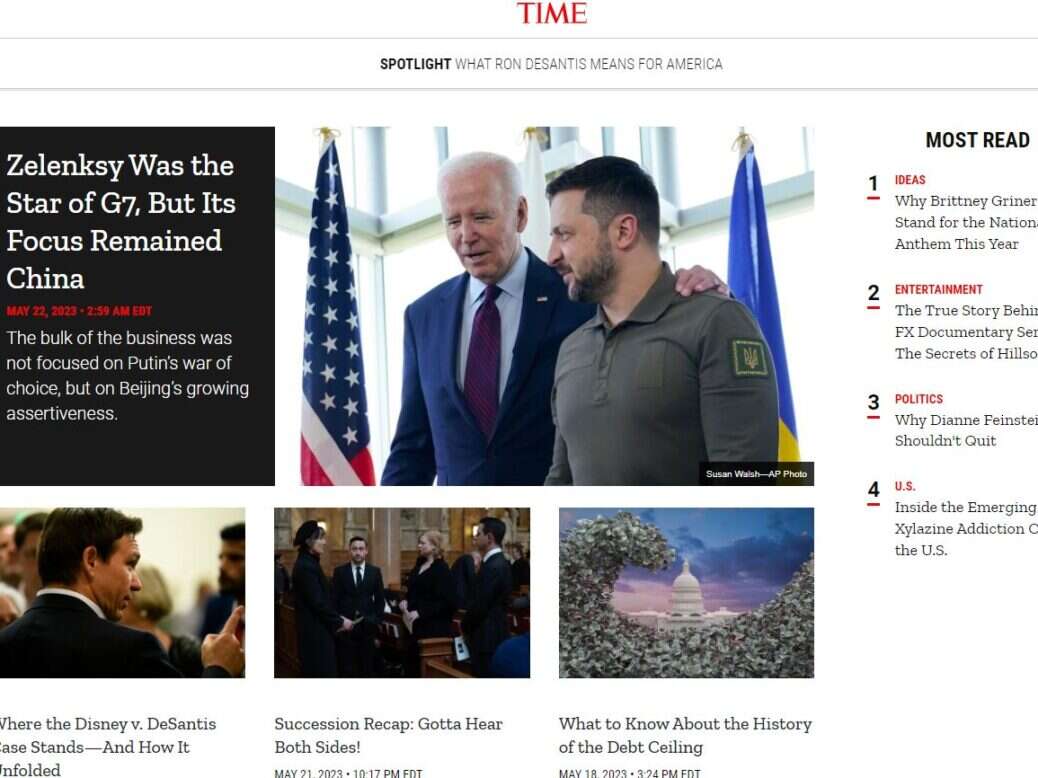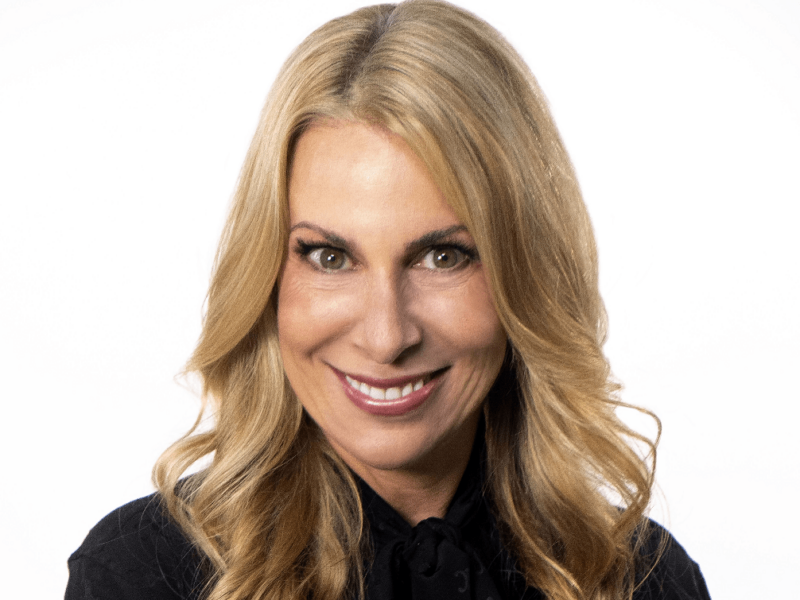
Online paywalls have largely been the saviour of quality journalism in the digital age, yet century-old news weekly Time is making its online content free from Thursday 1 June.
The move comes just over a year after business news site Quartz dropped its own paywall and six months after Insider revealed plans to make more of its content available for free, although that proposal stalled because of union opposition. Gannett-owned USA Today is reportedly placing around one-third fewer articles behind its paywall to boost ad revenue.
However this sort of decision-making, experts have told Press Gazette, does not represent a ceiling in the market for paywalled news.
With the likes of The New York Times, Washington Post, Times, Telegraph, Financial Times, Wall Street Journal, Bloomberg, Economist, Atlantic and more all making a success of paid-for online news and current affairs, there is still believed to be an opportunity for new paywalls to be launched in certain categories.
Why is Time ending its paywall?
Time first launched a hard digital paywall on its magazine content, keeping other website content free, in 2011 and soon put archive content behind the wall too. In the years since, it has experimented with various hard paywall and metered options across the site, eventually ending up in 2021 with a metered paywall across everything allowing visitors to read four articles before hitting the wall. By this year Time had reached around 250,000 digital subscribers alongside 1.3 million print subscribers.
The removal of the Time paywall is one of the first major acts of new chief executive Jessica Sibley, who joined from Forbes where she was chief operating officer in November, alongside her newly-hired editor Sam Jacobs.
Sibley has largely presented Time’s decision as a philosophical one to make its journalism – and archives – accessible to all. She said in a statement: “We fundamentally believe that access to trusted information is a global imperative and should be available to all of humanity.”

Speaking to The Rebooting Show podcast, Sibley also said: “This was not a hard decision for Time. For our brand, for our mission, we fundamentally believe that our content should be available to everyone, everywhere, for all time, for free.
“We want it to be accessible. We believe that there’s been a challenge with digital inclusivity. There’s a digital divide which became exacerbated through Covid… we feel that not only should our journalism and our content be accessible and available, we also feel the same way about our 100 years of archives.”
Quartz made a similar statement last year: “The shift is part of Quartz’s mission to make business better. We exist to help business leaders and their companies use power wisely, act with compassion, create products that truly matter, and do what they can to fix a broken planet and economic order. Those goals are clearly better-fulfilled by making Quartz’s journalism as accessible as possible.” (Quartz has reportedly ended up seeing a traffic dip in the past year, however.)
Time also has several business reasons for the move. Sibley discussed the frustrating experience for consumers of having to share their data and remember their sign-in details on different devices, as well as the difficulty in marketing Time’s content more widely to new audiences, a subscriptions decline post-Covid, and the fact journalists want their work to be read by as many people as possible.
Sibley also suggested in an interview with Axios that she believes other publishers could follow suit: “I don’t think that we’re going to be alone or not followed by others that are going to look at new business models that are right for their businesses, for their audiences and how potential consumers new and existing and everything in between are able to access that content.”
This would mark a major shift considering news leaders told the Reuters Institute for the Study of Journalism at the start of the year that subscriptions would be the most important digital revenue stream for them in 2023, with 80% saying subscriptions would be important – up from 74% in 2020. Some 68% thought their subscription revenue would increase in the year.
Michael Brunt, a former general manager of The Times and publisher of The Economist, told Press Gazette Time's decision "does somewhat fly in the face of the general trend towards monetising content through reader revenues".
Brunt is now a co-founder of HBM Advisory alongside former Times head of digital Alan Hunter, and their work includes advising businesses such as Future, Monocle and The Scotsman on their digital transformations and strategies, including monetisation.
Brunt said sites with paywalls need to carry out a "balancing act", explaining: "Big sites want to balance multiple revenue streams and the art is optimising it precisely, working out precisely what the paywall strategy needs to be so that the regular visitors being disrupted by the paywall are monetised in a way that is more than the money you would get from advertising or affiliate revenues from those repeat visits."
He said he would only take a paywall away from a website if it had "a major challenge with repeat visits".
"I would advise clients to think about how to boost repeat visits and really drive multiple article reading per visit for each target audience rather than necessarily dropping a paywall," Brunt said, "but all I can suggest is that they've [Time] done the maths, and the money that they're getting from the paywall is less than they would have got if they were monetising it through other streams."
Brunt also emphasised that adding a paywall to a website "is the beginning of the journey, not the final decision... it very quickly moves from a paywall strategy to an engagement strategy almost straight away."
He explained: "Once you've put a paywall in, you've got to continually think about how to optimise it. So it's about how do you drive people back to the site regularly so that they'll hit the paywall, but also so that they will feel they're consuming sufficient amount of content from that site and justify paying, say, for a subscription.
"So you have to think really hard about how hard the site or your app is working to bring people back again and again and once you've got them on the site, on the app, how is it working to keep them there to read another article and another article and another article. And that means sometimes very much looking at the structure of the site and reprioritising some of the components of the site to really push engagement.
"So you can do the maths and you can deploy the technology but unfortunately that's the beginning of the journey - you've got to really think about how you optimise the experience so that people feel their subscription has been worthwhile."
'Still a lot of opportunity' in the news market for paywalls
According to Brunt, the types of content people are generally willing to pay for are: where it feeds their passion, covering anything from hobbies to political interests, as well as "expertise that you would be willing to pay for, or analysis and opinion you can't get anywhere else".
This means, he said, there are "lots and lots of sites where they're currently only monetising through advertising revenues that do offer one or more of those three reasons to pay.
"So I think there's a still a lot of opportunity and I think people underestimate the value of their content sometimes and that it absolutely is monetisable and there will be an audience across the world somewhere that aggregates sufficiently to make a paywall worthwhile."
Notably Time is considering expanding its subscriptions strategy in one particular area: CO2, its separate platform launched last year dedicated to helping businesses take climate action.
Sibley told The Rebooting Show: "We think that there’s a great business for us in subscription in that platform. We have a newsletter that we’ve launched recently and we’re looking at the success of Politico as one example where they were able to reach the most important influential people in Washington with a product that they were willing to pay for.
"We feel the same with what’s happening with climate, we feel the same in terms of reaching chief sustainability officers and how this is going to be woven into the fabric of everything that we do personally and professionally and business-wise."
'Harder to break' ceiling in advertising market
Enders Analysis chief executive Douglas McCabe similarly told Press Gazette he was "absolutely convinced we're not at the ceiling" of the subscriptions market for news publishers.
"I also think publishers underrate the degree to which they control the ceiling," he continued, explaining that the question of whether the market is maxed out "makes an assumption that the market has a natural shape to it that cannot be influenced by the quality of supply. I think that's completely just not true."
For example, he said, The Guardian has never put up a hard paywall but changed its messaging asking people to pay and "gone from a market of nobody buying anything to a market of more than a million people contributing every month".
As a result, he added, The Guardian "moved the ceiling several inches higher" and redefined the market not as a premium subscription industry but one that values journalism more generally.
"If you reframe things in people's minds, the public's mind, maybe actually they think of the very concept of journalism differently and they think of the very concept of paying for a specific service or indeed a range of services in a very different way," he continued. "And so I think we've barely touched the surface, actually. I think we've got a long way to go."
McCabe suggested that with the exception of the most mature subscription businesses, naming The New York Times, Financial Times and The Economist, everyone else "is at the foothills".
"They're at the start of a learning process and they don't know if their market could be globally a five million paying audience, a two million paying audience or - who knows? - a ten million paying audience."
McCabe also pointed out that the rise of generative AI may provide an opportunity for publishers to differentiate themselves in an internet overwhelmed by "misinformation and nonsense" and therefore improve the case for charging for their content.
In general, ditching a subscription strategy means becoming more reliant on digital advertising. However McCabe warned: "I think that's a market where I can start to see the ceiling. We're not necessarily at the ceiling, but I think it is easier to see that feeling and it's much harder to break that ceiling."
This is demonstrated, he said, by the fact publishers have generally grown their online traffic and advertising revenue over the past ten to 20 years but have "steadily but relentlessly" lost their market share of the total.
Overall, he said, the market “generally talks a bit obsessively about the concept of premium subscriptions as if they are the only option”, pointing out that there are options between a free website and a hard paywall.
He said publishers need to get away from this “overly simplistic” thinking because “there are lots of options and opportunities in between”.
Email pged@pressgazette.co.uk to point out mistakes, provide story tips or send in a letter for publication on our "Letters Page" blog
